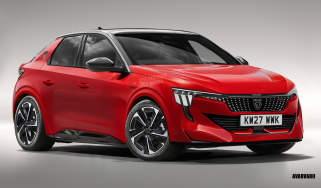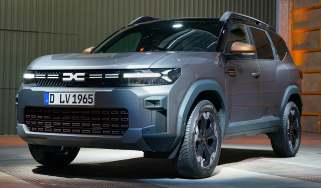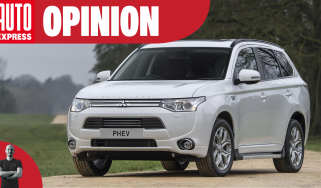Toyota Land Cruiser (Mk1, 1960-1984) icon review: an unstoppable off-roading legend
We put this legendary SUV through its paces in Scotland
There’s a saying in Australia that goes ‘if you want to drive into the outback, take a Land Rover, but if you want to get back out again, you’ll need a Land Cruiser’. As an Aussie, I take no greater pleasure than stating this at any and every opportunity just to antagonise my British, Land Rover-loving friends and colleagues.
But far from just being a throwaway comment; it’s one that’s built upon one of the greatest institutions of reliability, toughness and resilience – and that started right here with the original Toyota Land Cruiser.
Just like other off-roading institutions such as Jeep and Land Rover, the Toyota ‘Jeep’, as it was originally known, was designed as an off-road-capable military vehicle for the Japanese National Police Reserve in 1951, after the outbreak of the Korean War. But Toyota never actually landed a deal with the Police Reserve, losing out to Mitsubishi, and so converted its model for civilian use in 1953 under the now-iconic name, Land Cruiser.
By 1955 the brand had updated the Land Cruiser to create the new 20 Series, with a range of changes including a fully enclosed cabin. This also kicked off international sales. By 1960, the car had evolved to the 40 Series we’re driving today – a generation that many will recognise as the origin of the Land Cruiser story.
More reviews
Car group tests
In-depth reviews
Road tests
- New Toyota Land Cruiser 2024 review: an icon reborn and reinvigorated
- New Toyota Land Cruiser 2018 review
- New Toyota Land Cruiser 2016 review
- New Toyota Land Cruiser 2014 review
Used car tests
By this point, the Land Cruiser had already found its way into the world’s harshest off-road terrain, and generated a reputation for peerless reliability and dependability. This was underpinned by its hardy separate chassis, selectable four-wheel drive system and Toyota’s in-line six-cylinder engine. In fact, it was this ‘F Series’ motor that, in combination with ‘Jeep’, created the iconic ‘FJ’ name we know today.
By the time the 40 Series arrived, Toyota offered the Land Cruiser with a range of petrol and diesel engine options, but it was this core F Series 3.9-litre engine and its robust cast-iron block that cemented the car’s legendary status. By contrast, Land Rover Series II-A of 1961 had only just been offered with a 2.6-litre six-cylinder petrol engine, which was restricted to long-wheelbase models.
The J40 was in continuous production in Japan and at other global plants from 1960 to 1984, with manufacture in Brazil maintained until 2001. Over its lifetime, the 40 Series was available in short-wheelbase hard-top, soft-top, pick-up and long-wheelbase wagon forms. It’s hard to put a number on total production, because the Toyota continued to be built under licence in different factories.
In the mid-sixties the Toyota Land Cruiser was still at the height of its popularity, so rather than replace it, Toyota decided to introduce a second and more modernised variant that was only available in long-wheelbase wagon form. Called the 50 Series, it created this second line of body-on-frame Land Cruisers that were built in parallel until 1981, when Toyota introduced the 60 Series wagon.
In 1986, the ‘heavy-duty’ 40 Series was finally replaced with the 70 Series, which shared its more agricultural design and rugged off-road ability with the 40 Series and continues in production right up until today. Of course, the Land Cruiser brand had already been placed into the hall of legends, and by 1990 Toyota had decided to open up a third line of ‘light-duty’ Land Cruiser models, on which the current European-specification Land Cruiser is based.
Despite diverging into three different models, the Land Cruiser’s fundamentals have always been set in stone, with a rigid and tough body-on-frame architecture that relies on large-capacity engines and hard-wearing off-road drivetrain components. In almost all cases, Toyota never compromised on the use of tech such as dual-stage transfer boxes, locking differentials and, in the case of the modern 70 Series, a continued use of live axles. Today, the Land Cruiser 70 Series is still in low-volume production in short and long-wheelbase guises.
These modern 70 Series models, in fact, have only just been updated, and remain popular in rugged off-road markets throughout Australia, Africa and the Middle East. They’re also a favourite with government institutions and often play a large part in United Nations peacekeeping operations, so much so that Toyota still offers the ‘troop carrier’ bodystyle, which pairs a long-wheelbase chassis with only two front doors and a side-opening tailgate.
We got chance to get behind the wheel of a 1952 Land Cruiser in the highlands of Scotland. This not only gave us an insight into what a legend the original is, but also how its mantra is reflected so clearly in the new-generation Land Cruiser 250 on sale in Toyota’s UK showrooms today.
Driving an original Land Cruiser today
From the driver’s seat, the first thing that strikes you is how big the wheel is. This is a car without power steering, which means that your only assistance at parking speeds is leverage, not a circuit of hydraulics or more accurately in today’s world, electronics.
Find the keyhole on the pressed-steel dash, slip the key in and twist once to switch on the ignition. A quick check of the temperature gauge suggests this old warrior wasn’t driven too long ago; there’s still a touch of oil temperature, so no need to worry about the choke. A wiggle of the massive gearstick, depress the clutch, turn the key and the Land Cruiser elicits a straight-six noise more akin to a big saloon, albeit a gruff one.
It’s no wonder those people who were used to driving the Land Rover Series 1s or Willys Jeeps thought this was something a little more sophisticated; in this case, there’s no substitute for outright capacity. This example is owned by Toyota Germany, and despite looking quite sharp, it feels pretty antiquated – even by the scale of old-school off-road vehicles. The FJ40 features live axles at both ends, and a selectable four-wheel drive system with a central locking differential.
This mechanical coupling is evident the moment you move off, slipping the clutch for what feels like an age before there’s any forward movement. I was warned the clutch was high, but my knee feels like it’s brushing the underside of my chin before there’s any forward momentum. The steering is also very heavy, only relinquishing that weight with forward movement, but still it feels like you’re going to wrench the steering wheel off its mounting just to get the car pointed towards the gravel exit.
But once up and running, the Land Cruiser is incredibly driveable, with a smooth engine that’s pretty responsive when you’re used to the long pedal travel. Being carburetted, and controlled with nothing more complex than a cable mounted to the end of the throttle pedal, it’s this delicate interaction that takes you by surprise;. This car is hard work, but it’s also so satisfying and intuitive in a world where most SUVs don’t feature so much as a mechanically connected gear selector.
The live axles feel compromised the faster you go, the wheels seem like they’re only moments away from hopping right up and over the rest of the body. This is something accentuated by the short wheelbase and wide track. But this car’s mantra is ultimate rugged dependability, and the Land Cruiser feels indestructible.
So often when we drive old cars, there’s a velvet-glove approach that you must take in order not to destroy an important piece of history. By contrast, the FJ40 feels like it might start first time if we left it in the nearby stream for the winter, something we’re sure has happened to at least one Land Cruiser over its decades of service.
| Model: | Toyota Land Cruiser FJ40 |
| Production dates: | 1960-1984 (1968-2001 in Brazil) |
| Engine: | 3.9 or 4.2-litre 6cyl petrol; 3.0, 3.2, 3.4, 3.7-litre 4cyl diesel; 3.6, 4.0-litre 6cyl diesel |
| Power/torque: | 104-131bhp/191-284Nm |
| Transmission: | 3-speed manual, 4-speed manual (from 1974), 5-speed manual (from 1984), selectable four-wheel drive |







